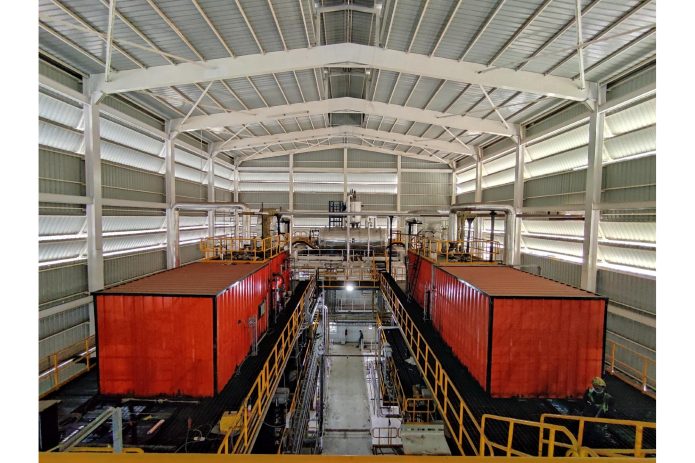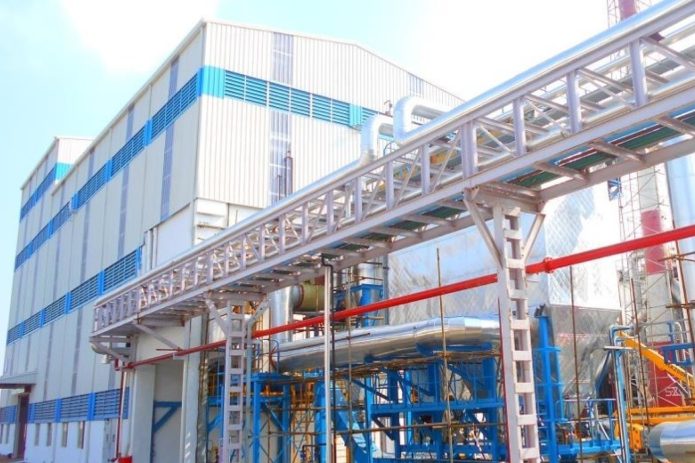Thermax is at the forefront of facilitating green energy solutions across various sectors, including pharmaceuticals and FMCG. Ms. Khushboo Bhatia, Chief Executive Officer at TOESL says that by utilising innovative technologies and a customer-centric approach, Thermax helps industries transition to sustainable practices while ensuring efficiency and compliance.
How does Thermax help customers optimise plant operations with its green utility solutions?
TOESL was incorporated in 2009 as a subsidiary to focus solely on green utilities, covering investment and life cycle maintenance and is 100 percent owned by Thermax. This division aimed to streamline the operation of green utilities. TOESL is responsible for investments, installations, and operations of green utility plants for our customers. Our green utility services cover the entire life cycle of a plant, from design to operation, providing KPIs like performance and availability. This allows customers to focus on their core manufacturing process, without the burden of running utilities.
We operate 45 installations with $60 million in assets across various utilities. TOESL offers biomass-based steam and heat, co-generation, wastewater treatment, and more, ensuring comprehensive solutions for customers. The company assets include biomass-based boilers, heaters, zero liquid discharge plants, air compressors, and chillers.
What are the application industries you are targeting?
We cater to all industrial segments, including textile, pharma, food, automotive, chemicals, and any manufacturing process requiring utilities. We operate 45 plants serving 25+ multinational accounts using an accounting approach. For example, we initiated their energy transition journey for a global food FMCG company, an international company. We helped them move from fossil fuel to green utilities, and now we have our fifth plant getting executed for them. It has helped them become one of the early adopters, providing the first-mover advantage.
Most of our customers are starting their energy transition journey with TOESL. Working with us has advantages, as with TOESL, OEM requirements are supported by Thermax’s technology, which is built in–house. Given that these are long-term contracts, we guarantee efficient utility operations for 10–15 years. Our owned technology, expertise, and efficiency help build confidence with our customers and continue to provide solutions.
What green energy solutions are available, and how does Thermax contribute to environmental sustainability?
We only focus on green utility solutions. Our offerings include producing biomass-based energy such as steam and heat, co-generation, electricity, wastewater and effluent treatment, and reduction in freshwater consumption. It assists customers in lowering their carbon footprints. We also help customer lower their freshwater usage, supporting the environment and helping industries meet sustainability goals while addressing climate change.
How does Thermax tackle the challenges associated with transitioning to green utilities?
Our portfolio is 100% built on green utilities, with a mandate to avoid blending coal with greener fuels. We have helped customers save 1.5 million metric tonnes of carbon dioxide, reducing their CO2 footprint. This demonstrates our commitment to addressing environmental challenges and promoting sustainable practices in our operations.

The challenge of producing steam and heat at mass has been addressed through backward integration and investments in technologies that can burn agricultural fuels daily. Zero liquid discharge technologies are being invested in to ensure the reuse of wastewater and the reduction of freshwater consumption.
What advantages do pharmaceutical investors gain, and could they build and operate their systems effectively?
The company focuses on the customer’s core process and utility, ensuring all responsibility from design to statutory obligations and environmental compliances. Thermax guarantees quality, efficiency, and quantity of required utility by investing in the utility plant, thereby helping customers become asset-light. This allows them to invest or reinvest their additional capital into their manufacturing process, enabling the customer to optimise cost. This approach allows customers to focus on their core processes and achieve financial stability.
What support does Thermax provide to the pharmaceutical industries about production efficiency and reducing carbon emissions?
We analyse the customers’ requirements and provide a comprehensive plan that enables them to optimise costs, reduce CO₂ footprint and remain focused on their core business. Our job is to deliver optimal efficiency and availability to the customer, which is crucial for pharmaceutical companies as a disruption in their process can result in supply chain issues and financial losses.
Over the past 10-15 years, solutions based on agricultural residue have significantly contributed to the biomass sector. Today, we are the largest OEM operator working with agricultural residue, processing approximately 2,500 metric tonnes of agro waste daily. We focus on backward integration by setting up processing facilities to gather agricultural residue, process it, and deliver it to customers. We ensure the entire process goes waste-free. We have been using ash generated during combustion instead of letting it end up in landfills. We reuse ash in construction processes, promoting a circular economy and reducing environmental impact. We have created a lot of effects environmentally and socially. We are also working as a team on initiatives that uplift our employees and the communities around us. We launched the Social Compact initiative, where 282 of our workers are subcontractors with the benefits of government schemes.
What energy solutions are available for waste heat recovery systems?
Our team specialises in ‘waste heat recovery systems’ – efficiently deploying waste heat for alternate usage. The life cycle of the product is not complex. But, applying the build-own-and-operate model can bring value in areas like water treatment solutions, biomass, and clean hydrogen. However, in the biomass segment, fuel supply, gasification, and clean hydrogen processes have complex life cycles, making it essential to continue exploring and enhancing these processes.
What are the Thermax digital solutions for containing carbon emissions and going green?
Thermax has deployed EDGE Live Solutions. We gather data from all our installations through our SCADA and PLC systems and benchmark all our sites to determine the optimum efficiency. These systems help us monitor all the plants installed. Digital data, algorithms, and manual intervention enable continuous improvement in efficiency, allowing optimal use.
What renovation and retrofit services are available for old boilers that can not be replaced due to cost constraints?
We work on both greenfield and brownfield solutions. The benefit of working on brownfield solutions is that the customer has already invested in and moved to a greener solution. If the customer has invested in a recent non-green solution, we retrofit that solution or take over that asset on a case-by-case basis and then provide the customer with the greener solution. Both options of retrofitting and taking over the assets are possible.
What green boiler market do you see in the coming future?
The boiler market is expanding, with customers increasingly opting for greener alternatives to traditional natural gas boilers. We are exploring the use of refuse-derived fuel (RDF)—a non-recyclable by-product of municipal solid waste (MSW) that can be combusted in boilers. While processing MSW, we segregate the recyclable from the non-recyclable material. Whatever cannot be recycled is converted into a fuel called RDF, which can be combusted in our boiler. We are heavily investing in technologies that can combust waste or renewable fuels.
How are the pharma companies addressing the energy needs?
Companies across various sectors, including pharma, textile and FMCG, prioritise sustainability and economic viability as a solution for their future needs with stringent laws and regulations. We are an energy transition partner to companies committed to achieving their ESG goals. They rely on Thermax to deliver OEM solutions. We achieved a huge amount of acceptance in the market.
Here’s an example from one of our FMCG partners: They have one boiler on biomass, while the standby boiler is functioning on another fuel. The customer has demonstrated much value in sustainability and is working with only green standby boilers.
What is the process for creating biomass energy solutions?
The technology developer for TOESL is our parent company; hence, tech and processes are driven in-house. We are probably the only OEM operating these solutions and take end-to-end utility responsibility. We install the plant and provide the utilities at cost based on consumption. While actively operating in India, we are also looking at selective internationalisation. We have initiated work in Indonesia and Sri Lanka.

What future opportunities do you see for Thermax in this area?
As a large energy and environment organisation, we partner with customers for their energy transition needs. Our legacy technologies include combustion, water & wastewater, multi-utility, and cooling solutions, and we are moving towards green hydrogen and gasification solutions. We aim to offer a variety of applications and process-integrated solutions to become their one-stop shop.
Cookie Consent
We use cookies to personalize your experience. By continuing to visit this website you agree to our Terms & Conditions, Privacy Policy and Cookie Policy.












